How did you get connected to SPI Study Abroad?
I originally got connected to SPI through a college friend (Texas A&M University), who had previously worked for SPI. She and I both traveled to Costa Rica with a group of high school students and spent two weeks in Flamingo Beach.
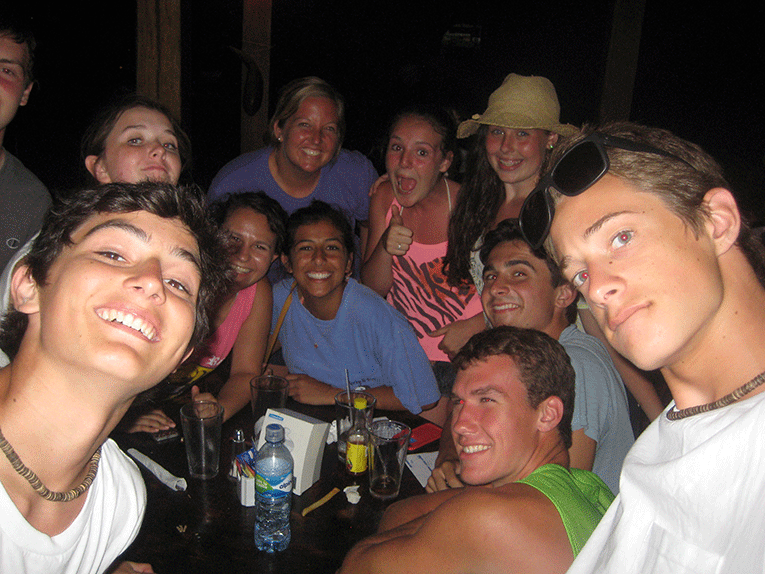
Group photo from Flamingo, Summer 2014 (April is toward the back in the purple t-shirt)
Describe a day in the life of the Costa Rica Head Director.
Each day is a little different, but here is a rough sketch of what my schedule looks like for a weekday:
- 6 a.m. - Sun rises, birds are chirping, monkeys are howling!
- 7 a.m. - Breakfast with homestay
- 8 a.m. - Meet group for morning activity (service work, culture activity, small excursion)
- 12 p.m. - Lunch
- 1 to 5 p.m. - While students are in their Spanish classes, I upload photos to social media and the blog, check email, and firm plans for the evening or upcoming day(s).
- 7 p.m. - Dinner with homestay (it’s dark by about 6 or 6:30 p.m.!)
Evenings vary depending on if there is an organized tour or group gathering, or what homestay families have going on.
Weekend days are usually filled with day-long excursions that might include a beach, zip-lining, horseback riding, river tubing, sightseeing, etc.
How do you prepare students before they go abroad?
Before students travel abroad, they will have gotten lots of information from SPI Study Abroad about studying and traveling abroad. Tons of information is available on the SPI website and social media sites. Students and parents are also in contact with the SPI admissions and program directors.
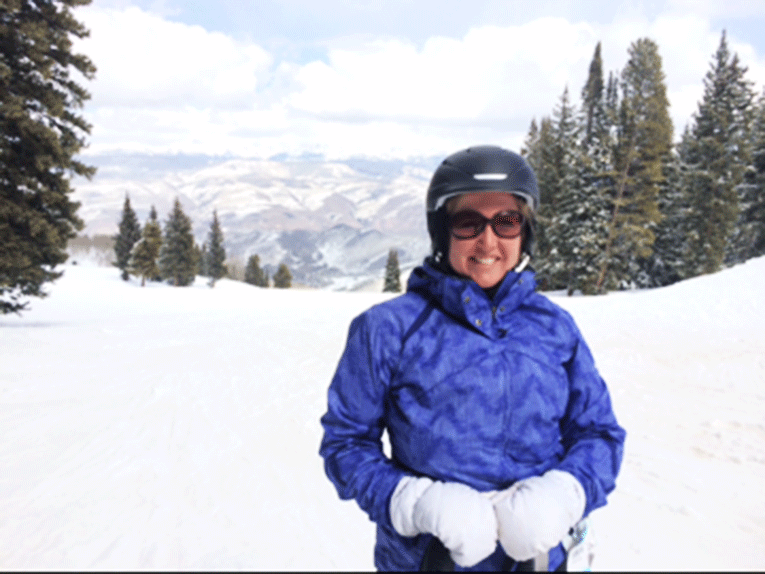
April’s favorite sport, snow skiing! This was taken at Beaver Creek in Colorado, March 2015
What are the accommodations like for students in Costa Rica?
Students live with local Tica (Costa Rican) families. Typically, the accommodations are very simple and modest, because we stay in small towns in rural areas. Homes are generally small and quaint, and do not come with lots of amenities like many of us enjoy in the U.S. But at the end of the day, it’s about getting an authentic experience, and what better way to accomplish that than by living like a local.
Many students are humbled by living with their homestay families, and learn so much about the Latin culture through living it. It is very common for homes to only have a couple of bedrooms, one or two bathrooms, a small family area, and a kitchen. Most all homes do not have air conditioning, but it’s not necessary in Monteverde where the climate is mild and kind of cool. On the coast, it’s much more humid and warmer, but homes are always equipped with fans to help circulate air.
What is the most commonly asked question from students, and what is your response?
I’ll mention several questions that come to mind:
Q: What is the food like?
A: Lots of black beans and rice, chicken, fish, some pasta, fruit, and most definitely coffee! Costa Rican food is pretty simple, not spicy, and portions are typically smaller than portion sizes in the U.S. Common dishes: gallo pinto (black beans and rice mixed together, served at any meal, including breakfast), arroz con pollo (shredded chicken, rice, and vegetables mixed and cooked together), casado con pollo/pescado/vegetariano (casado is a plate that has meat, rice, beans, small salad, and usually fried plantains).
Q: What should/shouldn’t I pack/bring?
A: SPI Study Abroad sends out a checklist of what to bring. I’ll also write a post on our blog before departure of some reminders. A good rule of thumb to follow is less is more! Also, leave the irreplaceables and valuables at home just in case they get lost.
Q: What should I bring to give my homestay family?
A: A framed picture of yourself, a book/food/item from where you’re from, make something (if you sew, knit, etc.), something related to a hobby of yours, really anything! It’s the thought that counts.
Q: Will there be wifi?
A: There is wifi at the language schools and at most restaurants/cafes. Most of the homestays do not have wifi, so students will get used to using wifi in certain areas, but not necessarily having it 24/7.
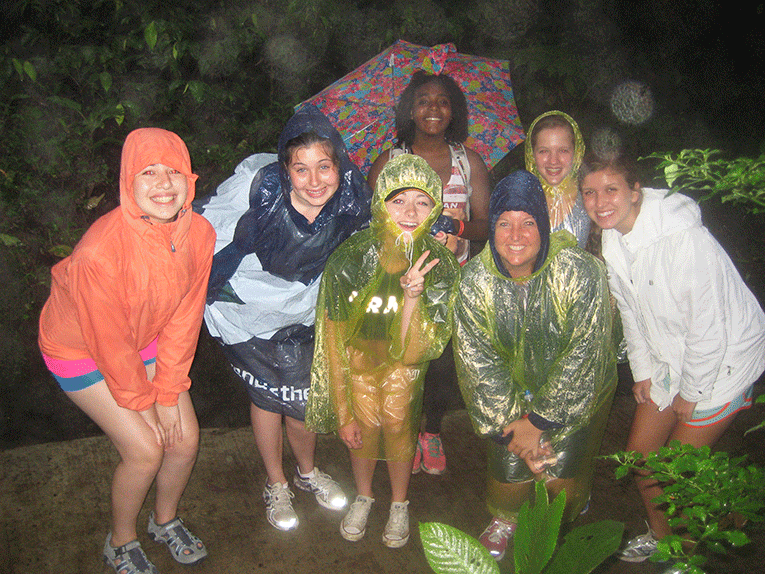
Group photo from Monteverde Cloud Reserve, Summer 2014 (April is in the front row on the right)
What makes SPI Study Abroad’s programs in Costa Rica unique compared to other programs in Costa Rica?
SPI’s Costa Rica programs are the perfect mix of Spanish language courses, cultural activities/exposure, and community service. We have a very full and busy itinerary. There isn’t a whole lot of free time, and that’s intentional. If students have tons of free time, what do they do? They’ll hang out with each other, speak English, find wifi spots, connect with their friends and families back home, and miss out on lots of things they could be doing right in front of them in Costa Rica!
I’m not saying this to mean we don’t want students to check in with their friends and family back home, but we don’t want students to spend too much time doing that when their time abroad is limited. In order for students to get the most out of their two or four weeks, we have a packed itinerary with lots of variety so that students can try to do and see as much as possible!
Going to class for four hours a day can seem daunting, but the classes are small and conversation-based. The instructors always have lots of different activities to keep things interesting, plus there is a 15-minute snack/restroom break halfway through the four hour block of class time. There will not be tons and tons of homework, because that’s not the point. The point is to have some protected time during the day to really focus on the mechanics of the language and practice listening, speaking, reading, and writing skills. Then, students will practice their Spanish in their homes with their homestays, in the community, and on the volunteer job sites.
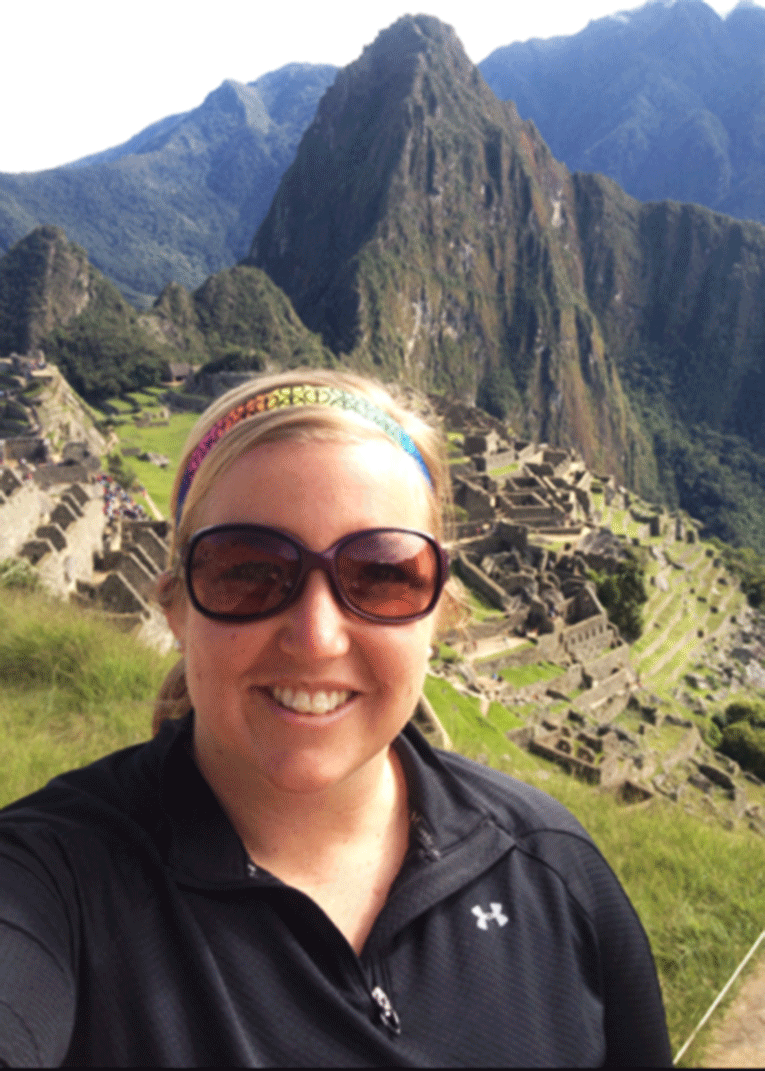
April in Machu Picchu, Peru, taken May 2014
Who is the ideal participant for a Costa Rica program?
The ideal participant is someone with an open mind, who is eager to learn, wants to practice and improve their Spanish, is willing to try new foods, and is also willing to work and help out when we do our service projects! The ideal participant has a positive attitude and realizes that a two (or four) week trip flies by and it’s best to make the best of each opportunity!
What optional activities do you offer to participants?
One of the optional activities in Monteverde is watching a movie in Spanish. Whether students realize it or not, this is a great way to practice their listening comprehension of the language! Another activity is going on a night hike. Since it gets dark early (by 6:30 p.m.), the night hike isn’t late, but it’s dark - flashlights required! The hike lasts about two hours and there are lots of interesting animals to search for while on the hike. Last year we saw a sloth, a viper (yikes!), and lots of other creatures on our guided night hike.
Students can also go on a horseback riding tour and catch some spectacular views, since Monteverde is up in the mountains. You can look out over the Pacific coast! There are lots of other options as well but these are the more popular ones. On the day trip to Isla Tortuga, students can opt to ride the banana boat, go snorkeling, play futbol on the beach, shop in the souvenir store, or just relax on the beach.
Optional activities at Flamingo include beach/water activities, like renting a jet ski, riding a banana boat, snorkeling, cliff jumping (with parent permission), stand up paddleboarding, and the most popular optional activity, taking surfing lessons!
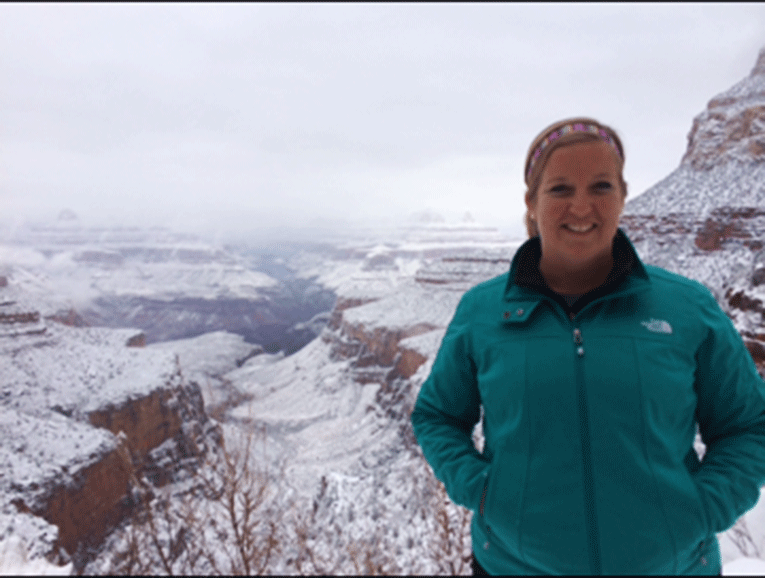
Snow-covered Grand Canyon, January 2015
What has been your biggest accomplishment as Costa Rica Head Director?
This might sound strange, but I feel a sense of accomplishment when students are sad when it’s their last day, last group photo, last time to give each other a hug before they fly home to their family and friends. The reason I feel a sense of accomplishment is because that tells me they enjoyed their time in Costa Rica! They may not realize it at the time, but they are leaving smarter, wiser, and with a broader world view. I hope they put the lessons learned to good use and continue to do great things.
I love seeing the transition students make during a short period of time. When they first arrive in Costa Rica, some are shy, eager, nervous, anxious, and excited. When they leave, there’s usually a mixture of emotions from leaving such a beautiful place and new friends, but also a sense of excitement to go home, reunite with friends and family, and share all their stories, pictures, and experiences. And of course, the language teacher in me is proud of the improvements in their language skills!
What is your favorite part of working for SPI Study Abroad?
SPI is filled with great people. The team in Austin is always so friendly and very organized! I love how everyone shares a common goal and similar interests: to help provide great opportunities for high school students to become bilingual, travel the world, and learn life skills and other lessons that can’t be taught or learned in a traditional school setting.



